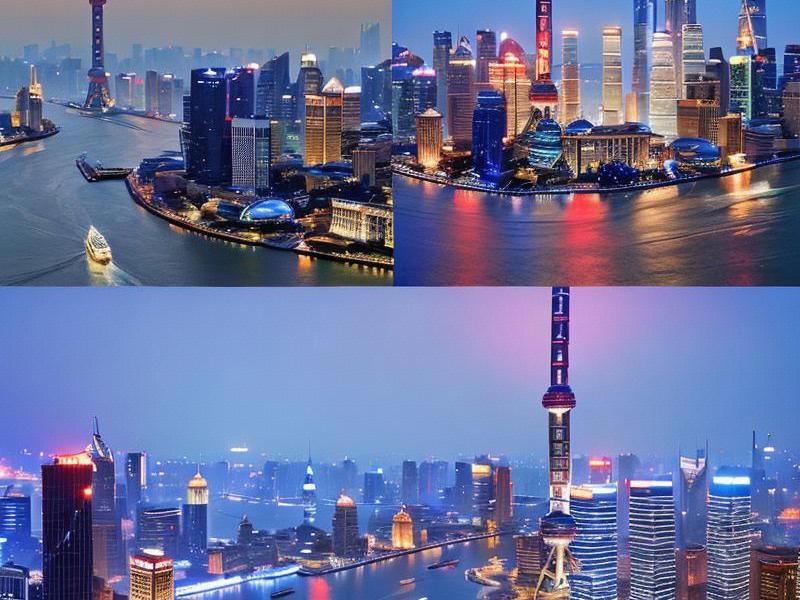Shanghai's Renaissance: A Journey Through the City's Modern Transformation and Cultural Revival
⏱ 2025-05-04 08:34 🔖 阿拉爱上海千花网
📢0℃

In the heart of China, where the Huangpu River meets the East China Sea, lies the vibrant city of Shanghai. Once a humble fishing village, Shanghai has risen to become one of the most dynamic and influential cities in the world. This article takes you on a journey through Shanghai's modern transformation and cultural revival, showcasing how this city has managed to preserve its rich history while embracing the future.
The Historical Context of Shanghai
Shanghai's story begins in the 19th century when it was forced open as a treaty port following the First Opium War. This marked the beginning of Shanghai's integration into the global economy. By the early 20th century, Shanghai had established itself as a major financial hub and a cosmopolitan center, attracting people from all over the world. The Bund, with its colonial-era architecture, stands as a testament to this era of prosperity and international influence.
However, the city faced significant challenges during the mid-20th century. The Chinese Civil War and subsequent political changes led to a period of stagnation. Yet, Shanghai's resilience and adaptability were evident as it began to rebuild and modernize in the late 20th century.
Economic Development and Urban Transformation
The economic reforms initiated in the late 1970s by Deng Xiaoping set the stage for Shanghai's rapid transformation. The city was designated as one of China's first Special Economic Zones, paving the way for foreign investment and technological advancements. Today, Shanghai is a global financial center, home to the Shanghai Stock Exchange and the Pudong International Airport.
上海贵族宝贝龙凤楼
Pudong, once a rural area on the eastern side of the Huangpu River, has been transformed into a symbol of Shanghai's modernity. The iconic Oriental Pearl Tower, the Jin Mao Tower, and the Shanghai Tower stand as landmarks of the city's skyline. These skyscrapers house multinational corporations, luxury hotels, and high-end shopping malls, making Pudong a hub of commerce and entertainment.
The city's infrastructure has also seen significant improvements. The Maglev train, the world's fastest commercial train, connects Pudong International Airport to the city center in just minutes. The expansion of the metro system has made transportation more efficient, allowing residents and visitors to navigate the city with ease.
Cultural Revival and Preservation
While Shanghai has embraced modernity, it has also made concerted efforts to preserve its cultural heritage. The city's historic districts, such as the French Concession and the Old City, offer a glimpse into its past. Narrow alleyways, lined with traditional shikumen (stone gate) houses, provide a contrast to the towering skyscrapers.
Cultural institutions play a crucial role in Shanghai's revival. The Shanghai Museum, housed in a former bank building, showcases an impressive collection of Chinese art, including ancient ceramics, calligraphy, and paintings. The Shanghai Grand Theatre hosts a variety of performances, from traditional Chinese opera to contemporary ballet.
上海水磨外卖工作室
The city has also become a hub for contemporary art. The Power Station of Art, a former power plant turned art museum, features exhibitions of both Chinese and international artists. The M50 Creative Park, located in a former textile factory, is another popular destination for art lovers, with galleries showcasing avant-garde works.
Global Influence and Future Prospects
Shanghai's transformation has not only reshaped the city but also elevated its status on the global stage. It is a member of the World Expo Organizing Committee and has hosted major international events, including the 2010 World Expo. This event brought together countries from around the world to showcase their achievements and foster global cooperation.
As a leading financial center, Shanghai plays a pivotal role in China's Belt and Road Initiative, which aims to enhance connectivity and trade between Asia, Europe, and Africa. The city's free trade zone has attracted numerous multinational corporations, further solidifying its position as a gateway to the Chinese market.
Looking ahead, Shanghai continues to invest in innovation and sustainability. The city is a leader in green technology and smart city initiatives, aiming to crteeaa more livable and environmentally friendly urban environment. The construction of the Hongqiao Transportation Hub, integrating high-speed rail, airports, and metro systems, exemplifies the city's commitment to efficient and sustainable transportation.
上海贵族宝贝sh1314
Conclusion
Shanghai's journey from a historical port city to a global metropolis is a testament to its resilience, adaptability, and vision. The city's modern transformation and cultural revival have not only preserved its rich history but also positioned it as a leader in economic development and global influence.
As Shanghai continues to evolve, it remains a beacon of opportunity and innovation. Whether you are drawn to its historical charm, its modern skyline, or its vibrant cultural scene, Shanghai offers a unique experience that reflects the spirit of China's rapid development.
In conclusion, Shanghai's renaissance is a story of balancing tradition and modernity, of embracing change while honoring the past. It is a city that continues to inspire, captivate, and amaze, making it a must-visit destination for anyone seeking to understand the dynamic and diverse face of China today.
Shanghai’s Gilded Lounges: Where Art Deco Opulence Meets AI-Curated ExtravaganceThe Great Shanghai Convergence: How the Mega-City Is Reshaping the Yangtze Delta Region"Code and Qipao: How Shanghai's Women Are Rewriting the Rules of Modern Femininity"The Yangtze River Delta Megaregion: Shanghai's Bold Vision for Integrated Urban Future《海派丽人启示录:上海女性审美变迁与都市文化演进》弄堂里的"新主人":上海城市更新中的社区共生与文化新生Shanghai's Nocturnal Revolution: How the City Redefines Luxury Entertainment《从"百乐门"到"数字包厢":解码上海娱乐会所的百年进化史》文章开始Shanghai's Beauty: A Blend of Tradition and ModernityShanghai 2045: The Living Laboratory of Urban Futurism

